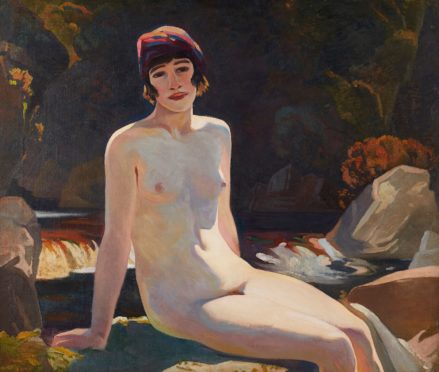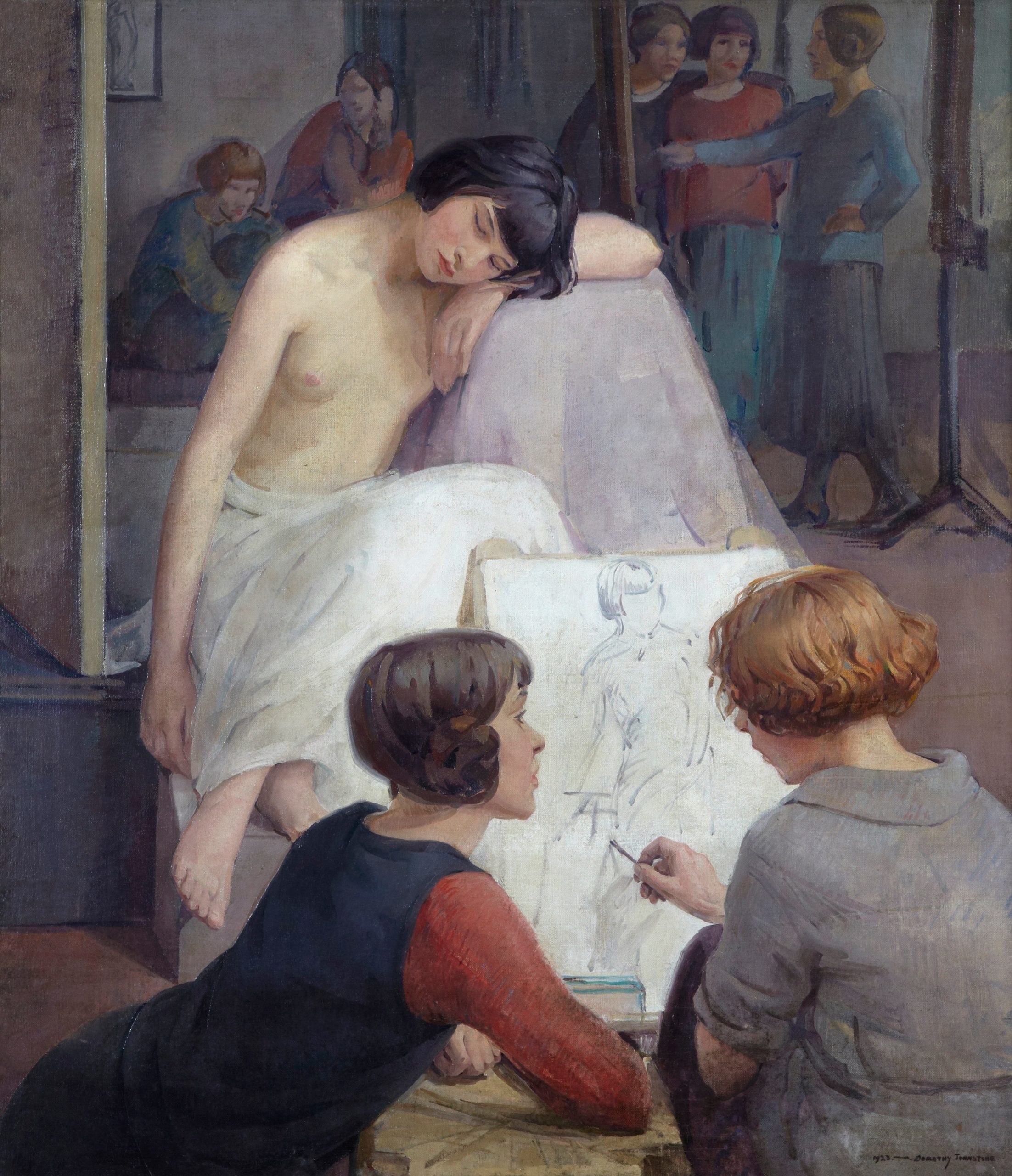
A new exhibition exploring the work of Scottish artists during the 1920s, is launching this weekend in Edinburgh.
Bright Shadows: Scottish Art in the 192os is timed to mark 100 years since the dawn of the ‘Roaring Twenties,’ and explores the works produced during this evocative era of social, political, cultural and economic change.
The exhibition at the City’s Art Centre, showcases over 35 artworks from the likes of D.Y. Cameron, Stanley Cursiter, Dorothy Johnstone, William McCance, Eric Robertson and William Wilson, as well as the Scottish Colourists S.J. Peploe and J.D. Fergusson.
Although it’s era that conjures up decadent images of Art Deco design, jazz music and flapper dresses, the 1920s was also a time period of sombre realities.
The First World War had just ended and many were working through the huge societal shifts taking place at the time.
These variations were explored by the Scottish artists of the time period who experienced these contrasts first-hand, and responded to them in a variety of ways.
Curator Dr Helen Scott said: “People often think they know the 1920s, as a golden age of jazz music, Art Deco fashion and Bright Young Things.
“But it wasn’t all hedonism and decadent excess. It was a complex period of great social, political and economic change – all of which had a significant bearing on art and artists in Scotland.
“Curating this exhibition has been a brilliant opportunity to really focus on a particular time period within the City Art Centre’s collection, and draw out new stories and perspectives.”
The exhibition brings together work by a range of artists, from mature figures like George Henry and S.J. Peploe who were already well-recognised and celebrated, to younger talents like William Johnstone and James McIntosh Patrick who were just beginning to forge their own creative paths.
An exhibition highlight is the painting Cecile Walton at Crianlarich (1920) by Eric Robertson. This striking portrait of the artist Cecile Walton is a brand-new addition to the City Art Centre’s collection.
Councillor Amy McNeese-Mechan, Culture and Community Vice Convener, said: “The 1920s were a key moment in art history, with influences that resonate to this dayincluding the emergence of the Surrealists, such famous names as Salvador Dali, Max Ernest, Man Ray, Yves Tanguy and Joan Miro.
“It also paved the way for women artists who’ve only gained recognition in recent decades – Frida Kahlo, Leonora Carrington, Leonor Fini and Dorothea Tanning, while the dawning Abstract and Neo-Expressionist movements revealed the works of Edvard Munch and Wassily Kandinsky.
“But Scotland was very much enjoying a thriving burst of artistic energy through the work of the Scottish Colourists, who adapted the vibrant colour palette of contemporary French painting into a distinctive Scottish approach through the 20s and 30s – artists like Francis Cadell and Samuel Peploe, Leslie Hunter and John Duncan Fergusson.
“One of the real joys of celebrating 40 years of our City Art Centre is the chance to celebrate the breadth and wealth of our collection of these iconic painters”.
Bright Shadows: Scottish Art in the 1920s opens on Saturday 12 September 2020, and runs until 6 June 2021. Admission is free, pre-booking online essential.
Visitors are asked wear face coverings and to pre-book free tickets for allocated time slots in advance via edinburghmuseums.org.uk

Enjoy the convenience of having The Sunday Post delivered as a digital ePaper straight to your smartphone, tablet or computer.
Subscribe for only £5.49 a month and enjoy all the benefits of the printed paper as a digital replica.
Subscribe © Artist's Estate
© Artist's Estate